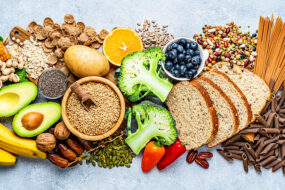A fat lot of good? The lowdown on when ‘good’ cholesterol is bad for you
As it turns out, you can have too much good cholesterol – despite its glowing reputation. Here’s what that means for your health and what to do about it.
We’ve been hearing for years about cholesterol and its impact on our health.
Now the news is we can have too much of the superhero that is “good” cholesterol.
Confusing? We’ve asked the experts to explain – but first, a recap on the “c” word.
What is ‘good’ and ‘bad’ cholesterol?
Cholesterol – the waxy, fat-like substance your body needs to make healthy cells, hormones and vitamins – moves through your bloodstream on complex molecules called lipoproteins, a combination of fat and protein.
But not all lipoproteins are created equally.
“When you hear cholesterol referred to as ‘good’ or ‘bad’, it’s actually referring to different types of lipoproteins – high-density lipoprotein or HDL, and low-density lipoproteins or LDL,” dietitian Rebecca Flavel says.
“LDL is known as the ‘bad’ cholesterol because high levels can lead to plaque build-up in your arteries, while HDL is the ‘good’ because it helps remove excess cholesterol from your bloodstream, carrying it back to the liver to be dealt with, reducing the risk of heart disease.”
So, what’s changed with good cholesterol?
As with most things in life, it turns out we can have too much of a good thing – including HDL cholesterol.
While, traditionally, high or very high HDL levels have been used as a marker of a healthy cholesterol profile, new research suggests there’s a limit on how high.
One recent study followed thousands of patients, looking at the relationship between high levels of good cholesterol and deaths among patients with coronary artery disease.
It found there was a U-shaped association between HDL levels and outcomes, which means both high and very low levels were associated with higher risk, compared to being in the safe middle zone.
That was even adjusting for factors such as diabetes, heart attack history and body mass index (BMI), with the risk found to be higher among men than women.
What does this mean for you and me?
“The research indicates it’s not beneficial to have abnormally high HDL levels,” dietitian Juhi Bhambhaney says.
“Cholesterol levels are typically expressed in millimoles per litre in the blood, and the European Society of Cardiology have recommended the HDL be not more than 2.3mmol/L.”
While researchers haven’t yet worked out why HDL can turn bad when it goes really high, Juhi says our focus should be on maintaining a healthy balance of LDL and HDL cholesterol for overall heart health.
If your overall cholesterol is heading towards 6.0mmol/L, you need to start taking action to reduce it.
For HDL, aim for greater than 1.2 mmol/L, and for LDL, less than 2.5mmol/L.
How to keep your cholesterol in balance
“To optimise your HDL and LDL ratio, aim for a diet high in soluble fibre from grains, legumes, lentils, fruits, vegetables, and supplements like psyllium husk which acts like a sponge to remove excess cholesterol,” Juhi says.
“Healthy, unsaturated fats from avocado, nuts, olive oil and omega 3 fats from oily fish like salmon, mackerel and canned tuna will also help improve your ratio.
“And weight loss, especially around the abdomen, will reduce inflammation and stress on the heart and liver.”
All of which should help keep bad cholesterol low and good cholesterol in the happy middle zone.
Read more on cholesterol and heart health:
- The plant power that can help you fight ‘bad’ cholesterol
- 6 lifestyle changes to reduce your risk of high cholesterol
- The new diet advice for a healthy heart
- The best exercise for a healthy heart
Written by Liz McGrath.





